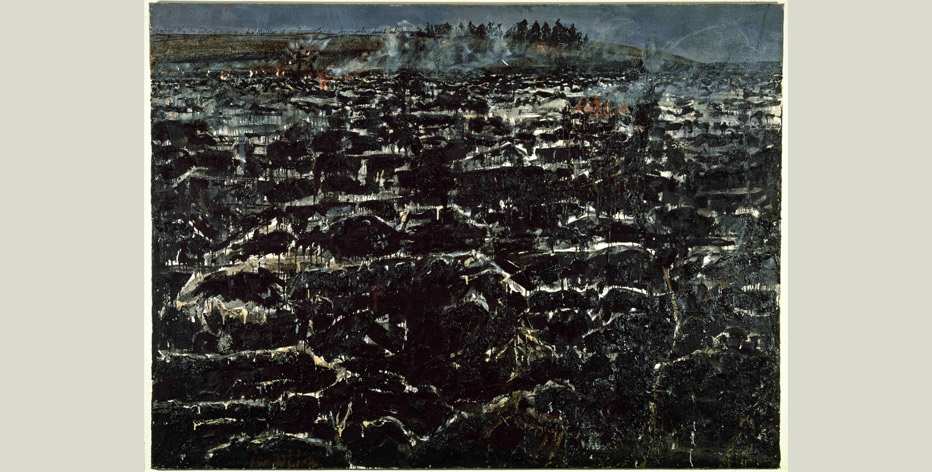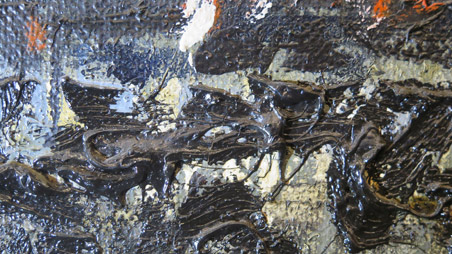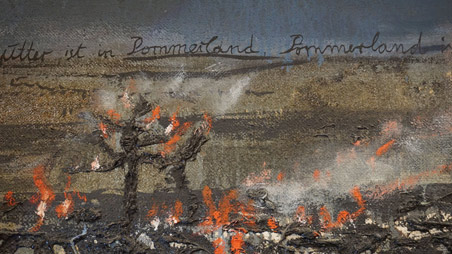The public conservation of “Maikäfer flieg!” (May Bug, Fly!, 1974) by Anselm Kiefer as part of the “Zeit für Fragmente” exhibition in the Hamburger Bahnhof – Museum für Gegenwart – Berlin (Hamburger Bahnhof – Museum for Contemporary Art – Berlin) is Part 2 of the IN PREPARATION series. IN PREPARATION looks behind the scenes of museum work – specifically at the preparations for the new Nationalgalerie building at the Kulturforum.
The IN PREPARATION series is supported by the Federal Commissioner for Culture and the Media.
“Maikäfer flieg!” is one of eight works by Anselm Kiefer (b. 1945) in the Marx Collection, which has been shown at the Hamburger Bahnhof – Museum für Gegenwart – Berlin in rotating exhibits. The Marx Collection focuses on works by Joseph Beuys, Robert Rauschenberg, Cy Twombly, Andy Warhol, and Anselm Kiefer. It will have its own exhibition area in the new Nationalgalerie building.


